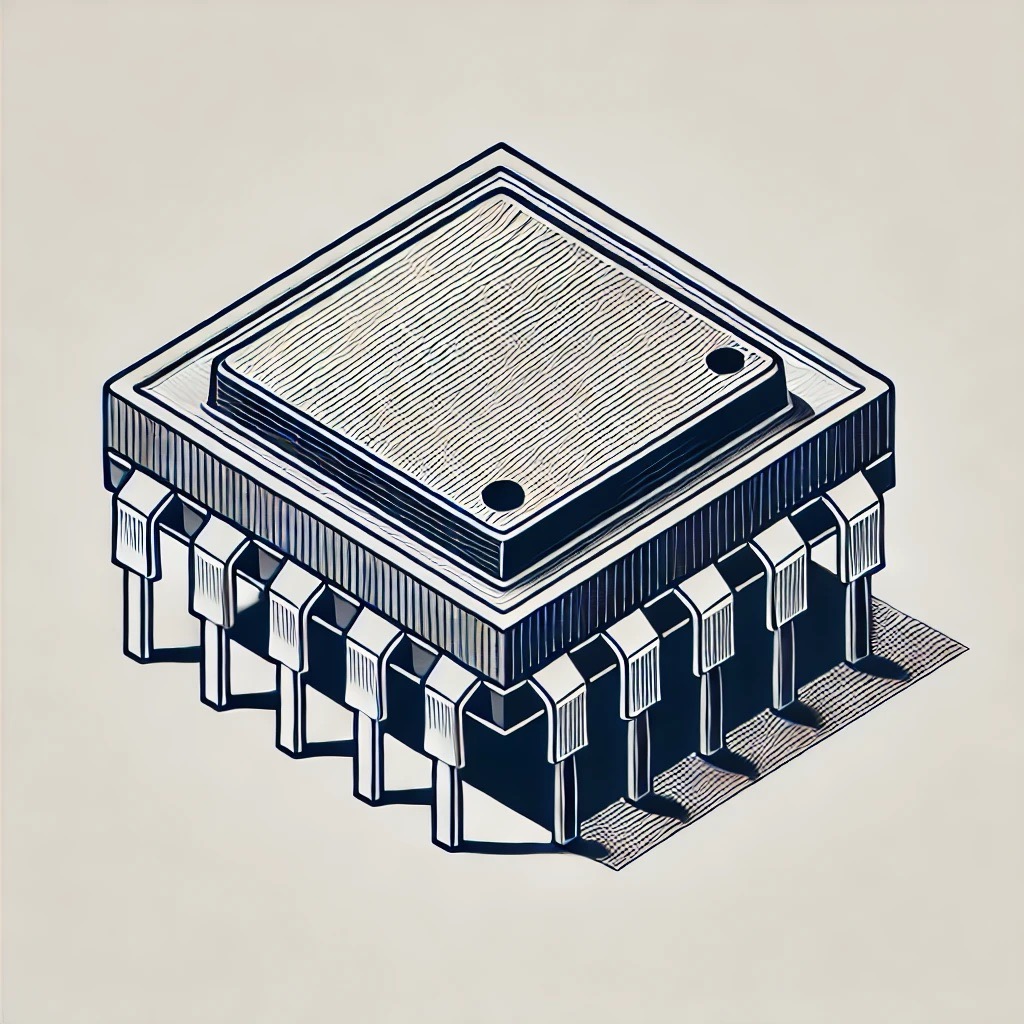Overview
The STM32F1 series, part of STMicroelectronics' STM32 family, is a widely-used 32-bit microcontroller series based on the ARM Cortex-M3 core. Known for its balance of performance, power efficiency, and peripheral integration, the STM32F1 series is ideal for a range of applications including industrial, consumer, and IoT devices. It provides a solid foundation for engineers and developers working on projects that demand high performance with low power consumption.
Key Features
The STM32F1 series offers an extensive set of features that make it a go-to choice for many embedded applications:
- ARM Cortex-M3 Core: Runs up to 72 MHz for efficient processing power.
- Memory: Flash memory options from 16 KB to 512 KB, and up to 64 KB of SRAM.
- Peripheral Set: Includes multiple USART, SPI, I2C, and CAN interfaces for flexible connectivity.
- Timers: Advanced timers, including general-purpose, PWM, and motor control timers.
- ADC: 12-bit ADC with up to 16 channels, supporting a sampling rate of 1 Msps.
- Power Management: Multiple low-power modes including sleep, stop, and standby for energy-conscious designs.
- Interfaces: USB 2.0 full-speed, Ethernet, and LCD on selected models.
- Operating Range: Wide voltage (2.0 V to 3.6 V) and temperature range (-40°C to +105°C for industrial-grade versions).
Specifications
Here are the key specifications of the STM32F1 series microcontrollers:
- Core: ARM Cortex-M3 32-bit
- Clock Speed: Up to 72 MHz
- Flash Memory: From 16 KB to 512 KB
- SRAM: Up to 64 KB
- ADC: 12-bit resolution, up to 16 channels, 1 Msps
- GPIO: Up to 80 pins with multiple configurations
- Timers: 3x 16-bit timers, 2x 32-bit timers, and motor control timers
- Low-Power Modes: Sleep, Stop, and Standby modes
- Temperature Range: -40°C to +105°C for industrial versions
- Interfaces: USB, SPI, I2C, CAN, Ethernet, LCD (select models)
Common Applications
The STM32F1 series is suitable for a variety of applications that require a balance of performance and energy efficiency:
- Industrial Automation: Ideal for control systems in factories and manufacturing environments.
- Consumer Electronics: Used in home appliances, entertainment systems, and more.
- Motor Control: A great fit for motor control systems in robotics and power management.
- IoT Devices: Powers smart devices and sensors for data acquisition and communication.
- Medical Devices: Suitable for medical equipment and instrumentation requiring reliable performance.
Programming
Programming the STM32F1 series is easy with the right development tools. Here’s how you can get started:
Development Tools
- STM32CubeIDE: The comprehensive IDE for STM32 development with built-in debugging and code generation.
- STM32CubeMX: A graphical tool to configure STM32 microcontrollers and generate initialization code.
- ST-Link V3: A versatile programmer/debugger for STM32 series microcontrollers.
Programming Tools
- ST-Link: A simple and cost-effective debugger/programmer for STM32 devices.
- J-Link Debugger: A third-party debugger providing advanced features for STM32 programming.
Programming Workflow
Here’s a basic programming workflow for STM32F1 series microcontrollers:
- Install STM32CubeIDE and STM32CubeMX for project setup.
- Connect the STM32F1 to your PC using an ST-Link or J-Link debugger.
- Create a new project in STM32CubeIDE, select your microcontroller model, and configure peripherals with STM32CubeMX.
- Write your application code in C, leveraging HAL and middleware libraries.
- Compile the project and upload the firmware to the microcontroller using the debugger.
- Use the IDE’s debugging tools to test and optimize your code.
Power Consumption
The STM32F1 series offers excellent power management features, making it suitable for low-power applications. The microcontroller can operate in several low-power modes:
- Sleep Mode: The CPU clock is stopped, but the peripherals continue to operate, allowing the system to save power while maintaining peripheral activity.
- Stop Mode: Both the CPU and most peripherals are powered down, resulting in significant power savings. Only a few essential components remain active.
- Standby Mode: The microcontroller enters the lowest power state, where it consumes minimal current while retaining the ability to wake up quickly from external interrupts or internal events.
These modes allow you to optimize power consumption depending on the requirements of your application, extending battery life in portable devices.
Communication Protocols
The STM32F1 series supports a wide range of communication protocols that enable it to interface with various peripherals and other microcontrollers:
- USART: Universal Synchronous/Asynchronous Receiver-Transmitter for serial communication.
- SPI: Serial Peripheral Interface for high-speed data transfer with peripheral devices.
- I2C: Inter-Integrated Circuit for communication with sensors and low-speed peripherals.
- CAN: Controller Area Network for robust communication in automotive and industrial systems.
- USB: USB 2.0 full-speed for communication with PCs and other USB-enabled devices.
These interfaces provide flexibility in designing systems that communicate with other devices and sensors, making the STM32F1 suitable for a wide variety of applications.
Conclusion
The STM32F1 series microcontrollers offer a powerful combination of performance, energy efficiency, and flexibility. With its wide range of peripherals and communication interfaces, it is a great choice for many embedded system applications. Whether you are working on industrial automation, consumer electronics, or IoT devices, the STM32F1 provides the tools and features needed to bring your project to life efficiently and reliably.
